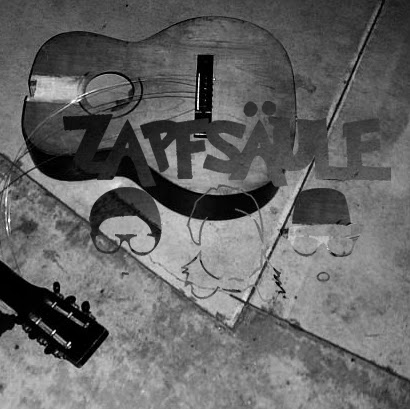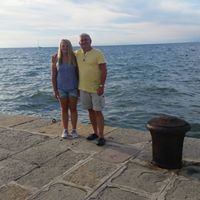Robert E Rapp
age ~80
from Sebring, FL
- Also known as:
-
- Robert B Rapp
- Rob B Rapp
- Bob B Rapp
- Roberte Rapp
- Phone and address:
-
2521 Pinewood Blvd, Sebring, FL 33870
(863)3824511
Robert Rapp Phones & Addresses
- 2521 Pinewood Blvd, Sebring, FL 33870 • (863)3824511
- Delaware, OH
- McMurray, PA
- Humble, TX
- Tomball, TX
- Dayton, OH
Lawyers & Attorneys

Robert Rapp - Lawyer
view sourceOffice:
Madson & Austin, P.C.
Specialties:
Intellectual Property
ISLN:
911870327
Admitted:
1994
University:
University of the Pacific; Brigham Young University, B.S., 1991
Law School:
McGeorge School of Law, J.D., 1994
License Records
Robert F. Rapp
License #:
25251901 - Expired
Category:
Contractor
Robert F. Rapp
License #:
25247779 - Expired
Category:
Contractor
Robert Rapp
License #:
RS053944A - Expired
Category:
Real Estate Commission
Type:
Real Estate Salesperson-Standard
Robert Edmund Rapp Jr
License #:
MT028761T - Expired
Category:
Medicine
Type:
Graduate Medical Trainee
Name / Title
Company / Classification
Phones & Addresses
Owner
Bob Rapp Electric
Electrical Contractor
Electrical Contractor
2945 Briggs Rd, Columbus, OH 43204
(614)2761327
(614)2761327
LIBERTYVIEW SOUTH LLC
UPPER ARLINGTON LUTHERAN CHURCH
Upper Arlington, OH
Director
MOMENTS TO MEMORIES, INC
12543 Honeywood Trl, Houston, TX 77077
2204 Travis Dr, Plano, TX 75093
2204 Travis Dr, Plano, TX 75093
Chairman, Treasurer
The First United Methodist Church of Sebring, Florida
Churches
Churches
126 S Pne St, Sebring, FL 33870
(863)3855184, (863)3855187
(863)3855184, (863)3855187
Incorporator
BOB RAPP & COMPANY
Isbn (Books And Publications)




Metallic Corrosion: Principles of Physical Chemistry and Current Problems
view sourceAuthor
Robert A. Rapp
ISBN #
0915567121

Texas Medical Malpractice: A Guide for the Health Sciences
view sourceAuthor
Robert E. Rapp
ISBN #
0801640954


Resumes

Marketing Manager
view sourceLocation:
Sebring, FL
Industry:
Building Materials
Work:
Columbia Energy Services Corporation 1969 - 2000
Retired
Alpha General Services Inc 1969 - 2000
Marketing Manager
Retired
Alpha General Services Inc 1969 - 2000
Marketing Manager

Robert Rapp
view source
Robert Rapp
view source
Robert Rapp
view source
Robert Rapp
view sourceMedicine Doctors

Robert Paul Rapp
view sourceSpecialties:
Family Medicine
General Practice
General Practice
Education:
The University of Texas at Galveston (1956)

Robert Edmund Rapp
view sourceSpecialties:
Internal Medicine
Family Medicine
Family Medicine
Education:
Drexel University(1992)
Us Patents
-
Cathode For Aluminum Production And Electrolytic Cell
view source -
US Patent:20020125125, Sep 12, 2002
-
Filed:Mar 6, 2001
-
Appl. No.:09/800140
-
Inventors:Robert Rapp - Columbus OH, US
-
International Classification:C25B011/04
-
US Classification:204/243100, 204/291000
-
Abstract:The present invention provides an improved TiBcathode for use in aluminum production cells for the electrolysis of alumina dissolved in a cryolite-based molten electrolyte and an improved electrolytic cell for producing aluminum. The cathode is a monolithic, porous, TiBbody having a continuous porosity and interconnected pores substantially throughout.
-
Degassing Of Liquid Aluminum And Other Metals
view source -
US Patent:59171146, Jun 29, 1999
-
Filed:Oct 31, 1997
-
Appl. No.:8/961977
-
Inventors:Robert A. Rapp - Columbus OH
-
Assignee:The Ohio State University - Columbus OH
-
International Classification:C22B 905
-
US Classification:75379
-
Abstract:Offgas recycling processes, including an argon degassing embodiment which cyclically regenerates one treatment flow path while the other treatment flow path is treating the offgas. The system is changed into a second mode to regenerate the previously treating portion of the system while the offgas is being treated by the previously regenerated treatment device. A second embodiment oxidizes a copper chloride bed to release chlorine, which is injected into the melt. The offgas contains chlorine and HCl, which react with a second bed, containing oxides of copper, forming copper chloride. Water vapor and nitrogen are exhausted to the environment. Before the beds are fully reacted, the flow of gas through the beds is reversed, oxidizing the CuCl bed and reducing the copper oxides.
-
Friction Welded Nonconsumable Electrode Assembly And Use Thereof For Electrolytic Production Of Metals And Silicon
view source -
US Patent:44682999, Aug 28, 1984
-
Filed:Dec 20, 1982
-
Appl. No.:6/451071
-
Inventors:Stephen C. Byrne - Monroeville PA
Siba P. Ray - Pittsburgh PA
Robert A. Rapp - Columbus OH -
Assignee:Aluminum Company of America - Pittsburgh PA
-
International Classification:C25C 300
C25C 304
C25C 326
C25C 312 -
US Classification:204 60
-
Abstract:A nonconsumable electrode assembly suitable for use in the production of metal by electrolytic reduction of a metal compound dissolved in a molten salt, the assembly comprising a metal conductor and a ceramic electrode body connected by a friction weld between a portion of the body having a level of free metal or metal alloy sufficient to effect such a friction weld and a portion of the metal conductor.
-
Method Featuring A Non-Consumable Anode For The Electrowinning Of Aluminum
view source -
US Patent:60398620, Mar 21, 2000
-
Filed:Jun 24, 1999
-
Appl. No.:9/339129
-
Inventors:Robert A. Rapp - Columbus OH
-
Assignee:The Ohio State University - Columbus OH
-
International Classification:C25C 306
-
US Classification:205386
-
Abstract:The present invention includes a conceptually new process to produce primary aluminum through the modification/adaptation for the HHC of a non-consumable anode of the type used for solid oxide fuel cells (SOFC) with the provision to electrochemically utilize/burn a fuel. The present invention is believed to work most effectively when the dissolution and fragility problems of the zirconia-base solid electrolyte can be sufficiently alleviated, e. g. , through the use of a lower electrolysis temperature, through the use of melt additives to restrict dissolution, and/or through modem methods for the fabrication/deposition of the electrolyte onto an appropriate internal metal anode. The present invention thus achieves, through the use of the solid-electrolyte-coated anode, the long-sought non-consumable anode. The electrochemical oxidation, inside the NCA in accordance with the present invention, of an inexpensive fuel, e. g. , reformed natural gas (as is done in the modern SOFC), constitutes a significantly more favorable anodic oxidation reaction than the evolution of pure oxygen disclosed by Marincek.
-
Composition Suitable For Use As Inert Electrode Having Good Electrical Conductivity And Mechanical Properties
view source -
US Patent:44540159, Jun 12, 1984
-
Filed:Sep 27, 1982
-
Appl. No.:6/423673
-
Inventors:Siba P. Ray - Plum Boro PA
Robert A. Rapp - Columbus OH -
Assignee:Aluminum Company of America - Pittsburgh PA
-
International Classification:C25C 300
C25B 1104 -
US Classification:204293
-
Abstract:An improved inert electrode composition is suitable for use as an inert electrode in the production of metals such as aluminum by the electrolytic reduction of metal oxide or metal salt dissolved in a molten salt bath. The composition comprises one or more metals or metal alloys and metal compounds which may include oxides of the metals comprising the alloy. The alloy and metal compounds are interwoven in a network which provides improved electrical conductivity and mechanical strength while preserving the level of chemical inertness necessary for such an electrode to function satisfactorily.
-
Methods For Forming Complex Oxidation Reaction Products Including Superconducting Articles
view source -
US Patent:51028646, Apr 7, 1992
-
Filed:Sep 10, 1990
-
Appl. No.:7/580407
-
Inventors:Robert A. Rapp - Columbus OH
Andrew W. Urquhart - Newark DE
Alan S. Nagelberg - Wilmington DE
Marc S. Newkirk - Newark DE -
Assignee:Lanxide Technology Company, LP - Newark DE
-
International Classification:C04B 3500
-
US Classification:505 1
-
Abstract:A complex oxidation reaction product of two or more metals in an oxidized state is formed by positioning a suitable precursor metal adjacent to a permeable mass of a metal-containing compound in an oxidizing atmosphere and heating the assembly to form a body of molten precursor metal. The molten metal infiltrates the permeable mass and reacts therewith and with the oxidizing atmosphere to form a complex oxidation reaction product. Methods for determining the shape of the resulting article are described. The disclosed methods can be used to form superconducting perovskites.
-
Method Of Depositing Chromium And Silicon On A Metal To Form A Diffusion Coating
view source -
US Patent:54927277, Feb 20, 1996
-
Filed:May 10, 1994
-
Appl. No.:8/240350
-
Inventors:Robert A. Rapp - Columbus OH
Ge Wang - Columbus OH
Endang Pangestuti - Columbus OH -
Assignee:The Ohio State University Research Foundation - Columbus OH
-
International Classification:C23C 1600
-
US Classification:427253
-
Abstract:A method for the simultaneous deposition of chromium and silicon to form a diffusion coating on a workpiece uses a halide-activated cementation pack with a dual halide activator. Elemental metal powders may be employed with the dual activator. A two-step heating schedule prevents blocking a chromium carbide from forming at the surface of the workpiece. Small contents of either Ce or V can be added to the Cr+Si contents of the coating by introducing oxides of Ce or V into the filler of the pack.
-
Methods For Forming Complex Oxidation Reaction Products Including Superconducting Articles
view source -
US Patent:49563386, Sep 11, 1990
-
Filed:Jul 6, 1988
-
Appl. No.:7/217105
-
Inventors:Robert A. Rapp - Columbus OH
Andrew W. Urquhart - Newark DE
Alan S. Nagelberg - Newark DE
Marc S. Newkirk - Newark DE -
Assignee:Lanxide Technology Company, LP - Newark DE
-
International Classification:C04B 3500
-
US Classification:505 1
-
Abstract:A complex oxidation reaction product of two or more metals in an oxidized state is formed by positioning a suitable precursor metal adjacent to a permeable mass of a metal-containing compound in an oxidizing atmosphere and heating the assembly to form a body of molten precursor metal. The molten metal infiltrates the permeable mass and reacts therewith and with the oxidizing atmosphere to form a complex oxidation reaction product. Methods for determining the shape of the resulting article are described. The disclosed methods can be used to form superconducting perovskites.
Youtube
Googleplus

Robert Rapp

Robert Rapp

Robert Rapp

Robert Rapp

Robert Rapp

Robert Rapp
Lived:
Columbus, OH
Lafayette, IN
Lafayette, IN
Education:
Ohio State University, Purdue Un., Carnegie-Mellon Un.
About:
Retired in 1959 after 32 years of teaching and research in Dep't Materials Sci. & Eng. OSU

Robert Rapp
Work:
Scoala Vietii - Boss (1991-3000)

Robert Rapp
Flickr
Myspace
Plaxo

Robert Rapp
view source
Robert Rapp
view source
Robert Gene Rapp
view source
Robert A. Rapp
view source
Robert F Rapp
view source
Robert Rapp III
view source
Robert Rapp
view source
Robert Rapp
view source
Robert Rapp
view sourceClassmates

Robert Amore (Rapp)
view sourceSchools:
Bentley High School Livonia MI 1980-1984
Community:
Richard Wood
Biography:
You all may know me better as Robert Rapp. Yeah I changed my name back in 1983. Th...

Robert Rapp
view sourceSchools:
New Castle High School New Castle PA 1936-1940
Community:
Ronald Reamer, George Elias

Robert Rapp
view sourceSchools:
St. John's Military Academy Delafield WI 1957-1961
Community:
Jason Jordahl, Ward Tollzien

Robert Rapp
view sourceSchools:
Long Beach Polytechnic High School Long Beach CA 1965-1969

Robert Rapp
view sourceSchools:
Neville Island High School Neville Island PA 1957-1961
Community:
Ken Allison, Susan Leaver, John Trimmer, Margaret Lewis, Margaret Belloma

Robert Rapp (Houck)
view sourceSchools:
Tri-Village High School New Madison OH 1995-2006
Community:
Stacy Smith, Rhonda Whitehead, Mary Ashworth, Shanna Broderick

Robert Rapp
view sourceSchools:
Stanley Elementary School Swampscott MA 1984-1990
Community:
Daphne Daniel, Manuel Sanchez, Bradley Perales

Robert Rapp
view sourceSchools:
Miller Place High School Miller Place NY 1974-1978
Community:
Roy Edlund, Lynne Schoepfer
Get Report for Robert E Rapp from Sebring, FL, age ~80

















